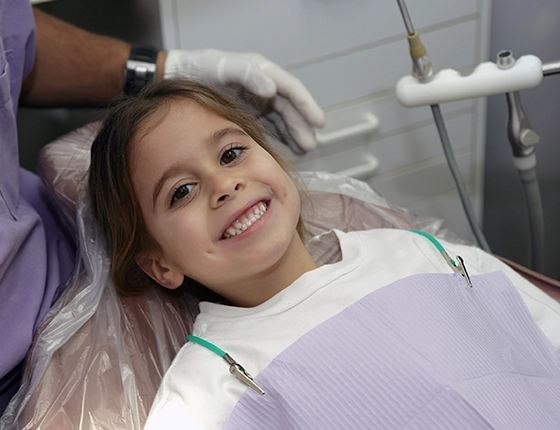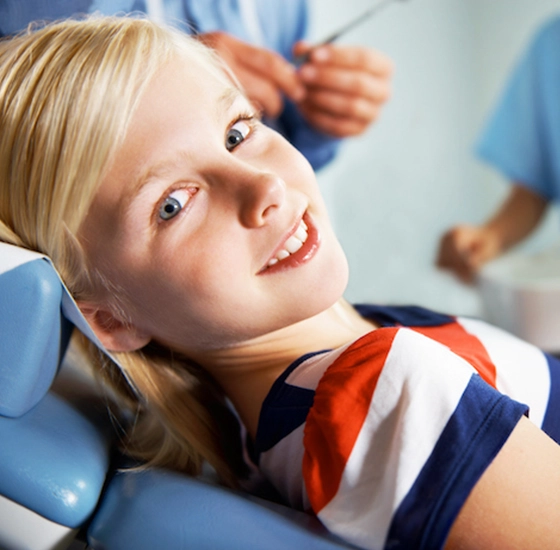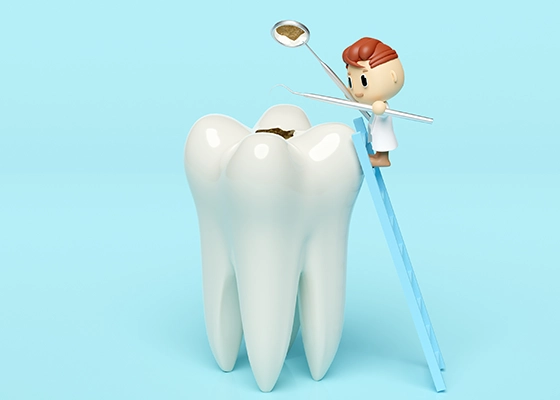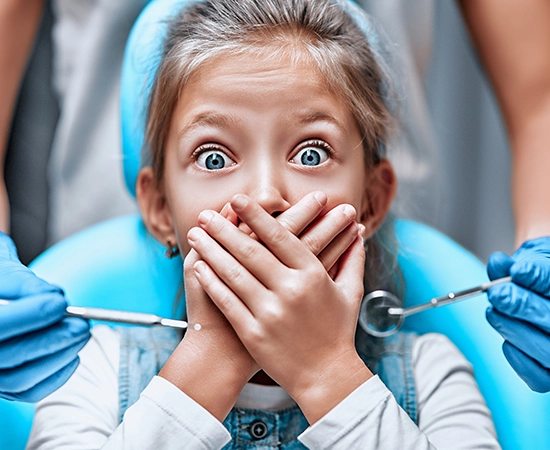The first “regular” pediatric dentistry visit should be just after your child’s third birthday. The first pediatric dentistry visit is usually short and involves very little treatment. We may ask the parent to sit in the dental chair and hold their child during the examination. The parent may also be asked to wait in the reception area during part of the visit so that a relationship can be built between your child and your dentist.
As your child’s pediatric dentistry service provider we will gently examine your child’s teeth and gums. X-rays may be taken (to reveal decay and check on the progress of your child’s permanent teeth under the gums). We may clean your child’s teeth and apply topical fluoride to help protect the teeth against decay. We will make sure your child is receiving adequate fluoride at home. Most important of all, we will review with you how to clean and care for your child’s teeth.


We are asked this question many times. We suggest you prepare your child the same way that you would before their first haircut or trip to the shoe store. Your child’s reaction to his first visit to the dentist may surprise you.
Some First Visit Tips
Tooth decay and children no longer have to go hand-in-hand. At our pediatric dentistry office, we are most concerned with all aspects of preventive care. We use the latest in sealant technology to protect your child’s teeth. Sealants are space-age plastics that are bonded to the chewing surfaces of decay prone back teeth. This is just one of the ways we will set the foundation for your child’s lifetime of good oral health.
Most of the time cavities are due to a diet high in sugary foods and a lack of brushing. Limiting sugar intake and brushing regularly, of course, can help. The longer it takes your child to chew their foods the longer the residue stays on their teeth, the greater the chances of getting cavities.
Every time someone eats, an acid reaction occurs inside their mouth as the bacteria digests the sugars. This reaction lasts approximately 20 minutes. During this time the acid environment can destroy the tooth structure, eventually leading to cavities.
Consistency of a person’s saliva also makes a difference. Thinner saliva breaks up and washes away food more quickly. When a person eats diets high in carbohydrates and sugars, they tend to have thicker saliva that allows more acid-producing bacteria that can cause cavities.


The first baby teeth that come into the mouth are the two bottom front teeth. You will notice this when your baby is about six to eight months old. Next to follow will be the four upper front teeth and the remainder of your baby’s teeth will appear periodically. They will usually appear in pairs along the sides of the jaw until the child is about 2-1/2 years old.
At around 2-1/2 years old, your child should have all 20 teeth. Between the ages of five and six, the first permanent teeth will begin to erupt. Some of the permanent teeth replace baby teeth and some don’t. Don’t worry if some teeth are a few months early or late. All children are different.
Baby teeth are important as they not only hold space for permanent teeth, but they are important to chewing, biting, speech, and appearance. For this reason it is important to maintain a healthy diet and daily hygiene and to visit your pediatric dentistry service provider regularly.
To learn more about our pediatric dentistry services or to schedule an appointment.
Contact Us
"*" indicates required fields
Opening Hours
Monday: 12PM – 7PM
Tue/Wed/Thurs: 9AM – 5PM
Friday: 9AM – 3PM
Sat/Sun: Closed
New Patients (734) 531-7638
Other Callers (734) 981-1199
42180 Ford Rd Suite 301, Canton MI, 48187
New Patients (586) 200-4187
Other Callers (586) 775-3312
25631 Gratiot Ave,
Roseville MI, 48066
Copyright © 2024 All About Smiles | Dental Marketing by WEB MARKETING FOR DENTISTS